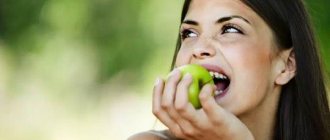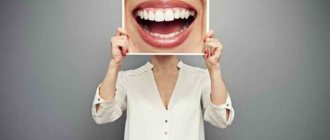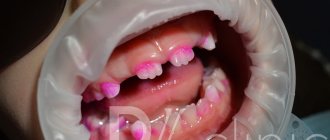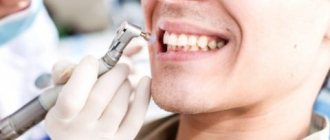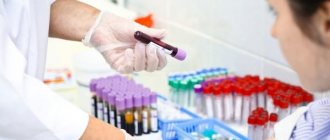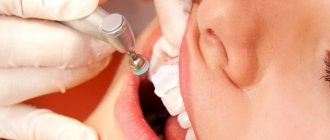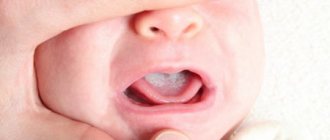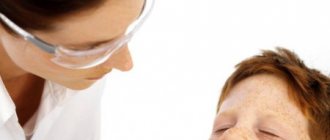Smooth and healthy teeth are the standard of beauty. Therefore, taking care of them must begin from early childhood. Some parents believe that it is not necessary to care for their baby’s baby teeth, since they are temporary and will fall out sooner or later anyway. But they are wrong. Their service life is on average 10 years, which is quite a long time. And chewing food with bad or missing teeth is not at all fun. In addition, damaged baby teeth can affect the health of permanent teeth. That is why it is important to take proper care of baby teeth as soon as a child has them.
Why care
Milk teeth are susceptible to many diseases - caries, periodontitis, pulpitis, gumboil. They have a detrimental effect on enamel, gums and even jaw bones. If caries is not treated, it will destroy the baby tooth, and the rudiment of the permanent tooth may also be damaged, and it will not grow at all. And the absence of teeth, even one, will lead to speech and bite problems. There will be difficulties with chewing food, which is fraught with the development of gastritis, ulcers, and constipation.
The first sign of incipient caries is the appearance of a white spot on the enamel.
Oral care is the prevention of the development of this pathological process. The plaque that forms on the enamel is a favorable environment for the development and reproduction of pathogenic microorganisms, which cause caries. Proper and daily cleaning will help remove it.
You should start brushing baby teeth from the very first, and not wait until they all erupt. Since the enamel of babies is fragile and the mucous membrane is too sensitive, they do not know how to rinse their mouths and spit, they are very careful when choosing items and products for oral hygiene.
For children under two years old, it is enough to brush their teeth once a day before going to bed at night. It is important to carry out the procedure in the evening, since it helps prevent the development of cariogenic microorganisms (Streptococci, Lactobacilli, Actinomycetes, etc.) in the oral cavity.
After two years, brushing your teeth should be a mandatory procedure in the morning before breakfast and in the evening before bed. They must be cleaned for at least 3 minutes and under adult supervision for up to 7 years.
Features of the structure of milk teeth
Should my baby's gums be cleaned before they have teeth?
Yes. Even before your baby's first tooth emerges, it's a good idea to get into the habit of wiping the gums with gauze or a soft, damp washcloth during bath time. You don't need to use toothpaste. Simply wrap a cloth or gauze around your index finger and gently rub it over your gums.
Bacteria in the mouth typically can't damage gums before teeth emerge, but it can be difficult to tell when teeth start to emerge, so you should start early. Getting your baby used to brushing their mouth as part of their daily routine should also make the transition to brushing their teeth later on easier.
What is the best way to clean my baby's teeth after they start to emerge?
When your baby's teeth begin to emerge (usually around 6 months), the American Academy of Pediatrics (AAP) recommends starting to brush them with a small amount of fluoride toothpaste. Here's how:
- Brush twice a day, in the morning and before bed. Use a children's toothbrush with a small head and a handle that fits your hand.
- Use a small amount of fluoride toothpaste. Squeeze a thin smear of toothpaste or a dot about the size of a grain of rice onto the brush (note that many toothpastes marketed for children do not contain fluoride).
- Gently brush the inside and outside of each of your child's teeth, as well as his tongue (if he'll let you), to remove bacteria that may cause bad breath. Since you are using such a small amount of toothpaste, there is no need to rinse your mouth.
Replace your toothbrush as soon as the bristles begin to look frayed or splayed.
At this point, your baby's teeth will be far enough apart that you won't have to worry about flossing. In fact, there is no evidence that flossing is necessary for baby teeth. Most dentists recommend starting to floss when the surfaces of your teeth are touching and you can't brush them with a toothbrush.
Why does my child need fluoride and how much is needed?
But while small amounts of fluoride are good for your child's teeth, too much can lead to something called fluorosis, which causes white spots to appear on your child's adult teeth. This is why it is important to only use a small amount of toothpaste until your child is old enough to rinse and spit it out.
- When your baby reaches 6 months, he should also receive a certain amount of fluoride from the drinking water used to prepare the formula. If your water does not contain enough fluoride, your child may need to take a fluoride supplement.
- Note: In general, it is not recommended to give your baby water until he or she is 6 months old. Until then, he gets all the hydration he needs from breast milk or formula, even in hot weather.
- If the water you use to prepare your baby's formula contains fluoride, he will get fluoride from bottle feeding. Most municipal water systems are fortified with sufficient amounts of fluoride.
If fluoride levels are less than 0.3 parts per million, ask your child's doctor or dentist whether you should give your child a fluoride supplement. Your doctor may prescribe fluoride in the form of drops that you can add to your baby's bottle or food once a day. Experts do not recommend fluoride supplements for children younger than 6 months.
When should you take your child to the dentist?
The American Academy of Pediatrics and the American Academy of Pediatric Dentistry recommend taking your child to the dentist within six months of his or her first tooth emerging or by their first birthday, whichever comes first.
At each visit, however, your child's primary care provider should examine your child's teeth (if any) and apply fluoride varnish every three to six months, depending on your child's risk of tooth decay. Risk factors include a family history of oral cavity problems and poor dental health of the mother during pregnancy.
- When you take your child to the dentist, be sure to tell them what types of fluoride treatments your child has already received at the doctor's office.
- If you cannot afford your child's dental care, consider contacting your local health department to find out about resources.
- These foods may contribute to the formation of dental caries:
- fruits
- dried fruits like raisins
- juice
- peanut butter and jelly
- bread
- crackers
- pasta
- pretzels
Serve these foods with water to prevent them from sitting on your teeth for too long.
Do not put your baby to bed with a bottle of milk, formula, juice, or sweetened liquid. These fluids feed bacteria in the mouth that cause tooth decay.
As a rule, by the age of three, the growth of baby teeth in children ends. And if you count the teeth, there will be ten of them on the upper jaw and on the lower jaw. That is, the milk bite consists of twenty teeth. The teeth are symmetrical about the center and have names. Each baby tooth has its own function.
For biting and gnawing food, there are four sharp incisors located centrally on the upper and lower jaws. To the left and right of the incisors are fangs, whose task is to hold and tear food. And very deep in the mouth, on each side, there are two chewing teeth (molars).
Baby teeth form in the sixth week of fetal development. Normally there are 20 of them:
- 8 molars;
- 8 incisors;
- 4 fangs.
Temporary teeth consist of the same tissues as permanent teeth:
- dentin (in temporary teeth it is softer and less mineralized);
- enamels;
- pulp.
However, primary incisors, canines and molars have features:
- low crowns;
- large distance between crowns;
- long thin roots that dissolve before the temporary tooth falls out and the permanent tooth erupts;
- thin enamel - only 1 mm;
- wide channels.
The structure of baby teeth is only slightly different from permanent teeth, so they no less need proper care. You can start brushing your child’s teeth after the very first incisor has erupted. Early training in hygiene will be an excellent prevention against many dental diseases that can affect the primary incisors, and then the rudiments of the permanent ones formed under them.
If you don’t care for your baby’s teeth or care for them incorrectly, your baby will have to visit pediatric dentists already in the first three years of life. Or he may tolerate drilling rotted teeth with a bur, which is painful and unpleasant for a small child, even with high-quality anesthesia.
We invite you to familiarize yourself with Nimesil - instructions for use, doses, indications
How to choose pasta
There is a huge variety of children's toothpastes on the shelves, which can make parents confused. It is very important to choose the right hygiene product, because babies do not yet know how to rinse their mouths and spit normally, so it must be safe.
Children under 4 years of age are advised to choose a dental care product that does not contain dyes, fluoride, or fragrances.
What's included
Fluorides
Fluoride is an important substance for teeth. However, its excess in the body can disrupt the structure of the enamel. Therefore, children's toothpaste should contain a small amount of fluoride. The amount of fluoride included in the composition is indicated on the packaging. For children under 4 years old it should be 200 ppm, from 4 to 8 years old - 500 ppm.
Toothpastes that do not contain fluoride: President Baby, Weleda, Splat Junior, ROCS Baby, ROCS Kids, Ushasty Nyan.
Products with minimal fluoride content: Lacalut Baby (250 ppm), My Sun (400 ppm), President Kids (430 ppm), New Pearl (475 ppm), Children's Pearl (500 ppm), Aquafresh Kids (500 ppm), Colgate Doctor Hare (500 ppm), Lacalut Kids (500 ppm), Oral-B Stages (500 ppm), Silca Putzi (500 ppm).
Abrasives
Abrasives are also important in paste. They clean teeth from plaque. Baby paste should not contain calcium carbonate (calcium carbonate) and sodium bicarbonate (sodium bicarbonate). These substances are too aggressive for children's enamel. Instead, silicic acid (hydrated silica) or titanium dioxide (titanium dioxide) is added, which have a mild cleansing effect.
On the packaging, the degree of abrasiveness is indicated by the RDA mark. For children under 4 years old, its indicator is 20 USD, over 4 years - 50 USD. Unfortunately, some manufacturers do not indicate the abrasiveness rating on toothpaste packaging. They only indicate which abrasive substance is added.
Children's pastes with low abrasiveness: ROCS, President, Lacalut, Silca, Colgate, Oral-B, Aquafresh, Eared nannies.
Foaming agents
The substance sodium lauryl sulfate is not allowed in the paste. It is toxic to the child's body, dries out the mucous membrane and can cause an allergic reaction.
Products that do not contain sodium lauryl sulfate: Weleda, ROCS, President, Splat, Lacalut, Eared Nanny.
Antibacterial substances
The paste may contain antibacterial substances: chlorhexidine, triclosan, metronidazole. They destroy pathogenic microorganisms in the oral cavity, as well as beneficial ones. Therefore, this toothpaste can only be used for indications (stomatitis, gingivitis).
Preservatives
To increase the shelf life of the product, manufacturers add preservatives to the composition: sodium benzoate (sodium benzoate), propylparaben (propylparaben), propylene glycol (PEG). These substances are harmful to the body, especially children, so their presence is not desirable.
According to manufacturers, Weleda, Splat, Oral-B toothpastes contain no preservatives.
If the paste has too long a shelf life, then this is a clear sign of the presence of a high concentration of preservatives. This product is not worth buying.
Flavoring additives
Of course, baby toothpaste should taste good. It is better to choose one that has natural ingredients added as flavorings, for example, mint, eucalyptus, vanilla. But you should avoid products with the synthetic sweetener saccharin (sodium saccharin).
Pastes Splat, Weleda, ROCS, Eared nannies do not contain flavorings.
Dyes
The best option for babies is a dye-free product that is white in color. However, most contain synthetic food dyes. It is better not to buy them for children.
Without dye, pastes such as ROCS, Eared Nannies, Weleda, Lacalut are presented.
Useful material
Some manufacturers add useful components to their product: milk enzymes (lactoperoxidase - lactoperoxidase, lactoferrin - lactoferrin), lysozyme (lysozyme - antibacterial agent).
Children's pastes with additional beneficial substances: Splat.
How to properly brush the teeth of children under one year of age and older, at what age should you start?
Teeth brushing should be carried out from the moment the baby’s first tooth erupts.
Some dentists will recommend starting to care for your child's oral cavity some time before teething. It has been proven that the sooner a child begins to get used to daily procedures, the faster he will get used to it and there will be fewer problems with the further development of oral hygiene.
But children, at the stages of preparing the oral cavity for teething, do not always easily succumb to such a procedure. Due to inflammation of the gums, almost any touch to the baby’s gums can cause a painful reaction. For these reasons, parents will be forced to give up trying until after the first tooth has erupted.
In fact, there is no fundamental difference between starting dental hygiene before the tooth erupts or after it. This is an individual decision for each family.
Not all parents know how to properly brush their children’s teeth, but the condition of the emerging permanent teeth depends on the quality of care for baby teeth. To protect your child from problems with molars, incisors and canines, it is necessary to teach him to brush and rinse his mouth after the very first tooth erupts.
You need to start brushing your baby's teeth from the moment they begin to erupt. At first, it is better to perform manipulations without paste, carefully treating not only the first tooth, but also the gum itself. You can use a special soft baby brush or a silicone pad that is placed on the parent’s finger. The last device will serve not only as a brush, but also as a gum massager, which will relieve pain from teething.
You should act carefully during the cleaning process, since the gums near the cutting tooth are inflamed and painful, so infants may react poorly to the hygiene procedure. But you cannot refuse it: during teething, local immunity deteriorates, so the risk of infection of the enamel increases.
Babies are born without teeth. The time of appearance of the first tooth is individual for each child. But this usually happens by 6–8 months. A one-year-old child can already count 8 teeth, and by the age of one and a half there will be 12–16.
Caring for a child’s teeth should begin from the first days of a baby’s life. But the direct formation of all milk and permanent central teeth, lateral incisors and canines (12 in total - 6 upper and 6 lower) occurs in the womb. A pregnant woman's daily diet must include plant and animal proteins - eggs, dairy products, meat, fish, as well as fruits and vegetables.
How to choose a brush
Babies under one year old need to brush their teeth using a special silicone brush that fits onto an adult’s finger. On one side it is equipped with soft silicone bristles, on the other - with pimples that can be used to massage the gums, tongue, and the inside of the cheeks. This brush can be purchased at a pharmacy.
From the age of one year, children can start brushing their teeth with a brush, which is very important to choose correctly.
When choosing this accessory, you need to consider the following factors:
- Age appropriate . Almost all manufacturers indicate age markings on their products: from 1 year to 2 years, a brush with a long handle no more than 10 cm, head length 1.5 cm is suitable); from 2 to 5 years - handle length up to 15 cm, head length 2 cm; from 5 to 7 years - handle length up to 17 cm, head length 2-2.5 cm).
- Rigidity . The brushes are available in 3 options - soft, medium hard. Soft is suitable for babies with bleeding gums. If there are no problems with gums and enamel, then the hard option is suitable. If the health of the gums and enamel is unknown, then it is better to purchase a medium-hard brush.
- Bristle . Toothbrushes are available with natural or synthetic bristles. Dentists recommend buying it with synthetic bristles. It will last longer, will not deteriorate and pathogenic microorganisms will not live in it.
- Pen . The presence of anti-slip silicone or rubber inserts.
- Head . The head should be streamlined.
- Design . A children's brush should have a colorful design, for example, with the image of a favorite character.
Which toothbrush should you buy?
At first, it’s easier to brush your baby’s teeth with a piece of gauze. Wrap it around your finger, drip a little toothpaste onto the cloth and wipe your baby's teeth on all sides. If you choose to use a toothbrush, it should have soft, rounded bristles of varying lengths and a small, flexible head. This will allow you to effectively clean hard-to-reach areas of the oral cavity. Pay attention to the packaging, which indicates the age for which this toothbrush is intended. Replace your baby's brush every three months, or more often as soon as the bristles become curled and start to stick out to the sides.
Proper Teeth Brushing Technique
You can start brushing your teeth with toothpaste when the child’s first incisor appears, the deadline is one and a half years. You shouldn’t wait until he develops caries due to lack of proper care.
Brushing procedure with toothpaste:
- a certain amount of paste is applied to a pre-moistened brush;
- the brush is brought at a right angle to the crowns;
- The tooth surface must be cleaned using sweeping movements: from the roots to the tops;
- The inner dental surface is cleaned with short movements, the brush is placed at an angle of 45 degrees;
- the cutting and chewing surfaces of the crowns are processed at the very end;
- after completing the procedure, you should rinse your mouth with water;
- The approximate duration of each cleaning is 2–3 minutes.
To clean the outer part of the gum, mommy places her finger at an angle. Movements should also continue to be performed in a progressive manner. It is also important to pay attention to the chewing surface. All teeth will be located on it in the future.
The fingertip should also be rubbed along the tongue and the back of the cheeks. Thanks to this, it will be possible to eliminate almost all harmful bacteria.
When your baby's first teeth appear, the area between them will have to be further cleaned with dental floss. Until the age of four, all manipulations are allowed only to parents. Otherwise, the risk of gum injury increases.
Even some adults don’t know how to brush their teeth. Meanwhile, incorrect technique increases the risk of developing caries. Intense movements of the brush in the horizontal plane lead to the accumulation of bacteria in the interdental space.
- For convenience, a row of the child’s teeth can be mentally divided into sections, and each one can be cleaned separately. To remove plaque from the front surface, you need to tilt the brush at an angle of 45 degrees to the gum and make confident movements from top to bottom for the upper jaw and, accordingly, from bottom to top for the lower jaw. To clean the inner surface, the brush should be held vertically and similar movements should be performed.
- Up to 3 years of age, the procedure should take no more than 2 minutes. In the future, when the child learns to spit out the paste, you need to increase the duration of cleaning to 3-5 minutes.
- There is no need to squeeze out a lot of paste - a small pea-sized amount is enough for children.
- Paste and brush should be purchased according to age. Typically, manufacturers indicate “0–3”, “0–4”, etc. on the packaging.
- Children's brushes have softer bristles and are smaller in size than adult brushes. They need to be changed every 3 months. Also on sale you can find electric brushes with an unusual bright design, designed specifically for the little ones.
- A child's first toothpaste should not contain fluoride as long as there is a risk that the little one might swallow it during brushing. As soon as he understands how to spit and does not try to taste the paste, you can switch to fluoride-containing products.
We invite you to read: How to whiten dentures made of plastic at home and without harm?
From an early age, adults teach babies to care for the oral cavity. At 3-7 months, the baby experiences unpleasant sensations associated with teething. During this period, special silicone finger tips are used to massage and clean the gums, tongue, and cheeks. To eliminate discomfort from teething, special ointments and gels are used.
In the period from 7 to 18 months, it is mandatory to carefully remove plaque, thus protecting the teeth from creating favorable conditions for the proliferation of harmful microorganisms.
Irregular and poor quality care for the oral cavity of a baby under the age of one year provokes the formation of Priestley plaque.
Plaque formation is not always associated with poor oral hygiene. Sometimes this indicates that:
- choosing the wrong toothpaste;
- the child sucks an empty bottle for a long time;
- taking medications for a long time;
- the functioning of the spleen is impaired;
- there are disturbances in the functioning of the digestive tract;
- possible infection with helminths.
An excess of information often confuses parents about the need to use toothpaste in children under one year old. The opinion of dentists regarding the use of toothpaste to clean the first tooth is twofold.
One group of dentists says that toothpaste is not needed, explaining their decision by the absence of negative nutritional factors. Children under one year old receive a minimal amount of sugars, and breast milk, in general, is not a provoking factor for the development of caries.
In addition, children at an early age simply physiologically do not know how to rinse their mouths and spit, and will swallow a certain amount of toothpaste.
The second group of dentists says that toothpaste is still needed.
We cannot exclude the possibility of the formation of caries and many inflammatory diseases of the oral cavity during artificial feeding and the introduction of complementary foods, because the timing of teething and the introduction of complementary foods coincide.
It has not yet been possible to determine which opinion will be the most correct; each point of view has the right to exist. The decision to use toothpaste rests solely with the parents.
If you decide to start brushing your teeth with toothpaste, then you need to choose it carefully and painstakingly. A child's first toothpaste must meet a number of requirements. It should not contain:
- Preservatives;
- dyes;
- foaming agents;
- parabens;
- fragrances;
- fluorine;
- Sahara.
The paste may contain BIO components - herbal extracts, lactic enzymes, due to which the surface of the teeth is cleaned.
Among the most popular toothpastes for up to a year, one can note the “Splat” set for cleaning the first teeth, the set includes the first finger toothbrush and the first toothpaste; toothpastes "ROCS", "chicco" and many others.
When choosing a toothpaste, you must carefully read the instructions for use and look at the labeling, which indicates the age at which the paste can be used.
If a child refuses to use the paste, because the child may not like the incomprehensible, although pleasant, taste of the paste, there is no need to insist.
Satisfactory oral hygiene can be achieved without the use of toothpaste.
To use toothpaste for the first time, just lubricate the silicone bristles of the finger toothbrush with toothpaste and brush your teeth. During the procedure, parents should carefully monitor the child's reaction.
If the child reacts quite well to the toothpaste, then next time you can increase the amount.
It is worth remembering the “golden rule” of toothpaste - the amount of it for one brushing should not exceed a small pea.
If the amount of toothpaste is larger, the child will simply swallow most of it. Of course, swallowing age-appropriate toothpaste is safe, but it is still not advisable.
Even if the first brushing of teeth is met with a negative reaction from the child, parents should not give up their position.
The fact is that the child simply does not understand what the parents want, and defensive reactions are activated. As soon as the baby understands that the procedure is safe and is carried out daily, the negative reaction will disappear.
It is recommended to use toothpaste to clean a child's teeth at the age of about one year. It is necessary to use only special children's paste. It tastes quite pleasant, has the aroma of berries, fruits and chewing gum, so children usually like it very much. A child can even swallow such toothpaste, since it contains a very small amount of fluoride, the accumulation of which in the human body can be dangerous.
In addition to performing the function of preventing caries, children's toothpastes provide the necessary care for gums and reduce discomfort and pain during teething.
